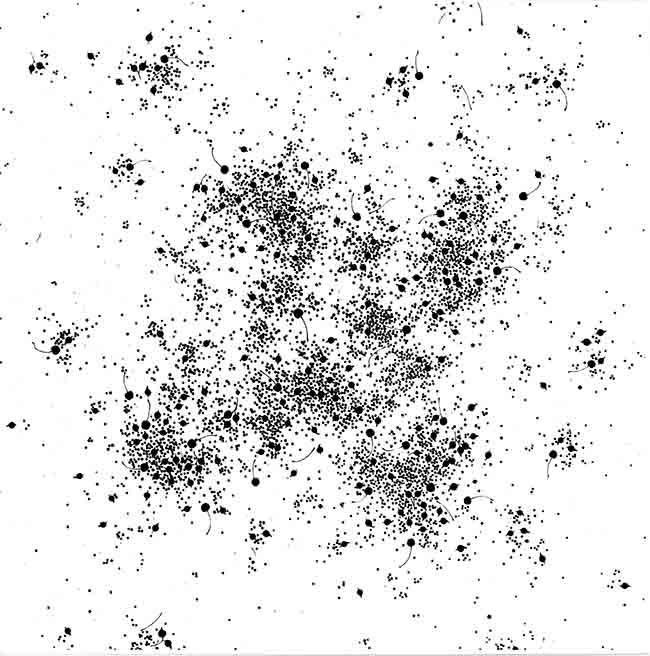Pavel Hayek’s art invites you to pause and take a closer look at the ordinary. His work doesn’t seek to dazzle with exotic subjects or dramatic themes; instead, it’s rooted in the here and now, reflecting the world immediately around him. Whether through painting, graphic art, or photograms, Hayek examines the everyday with a keen and meticulous eye, transforming the familiar into something worth exploring.

Hayek’s approach is straightforward: he draws inspiration from nature and objects within his immediate environment. This isn’t about elevating these items to something extraordinary but rather uncovering the patterns and structures we often overlook. His focus on ordinariness is intentional. The shapes, patterns, and textures that might go unnoticed in daily life become central in his works, giving viewers a fresh perspective on the mundane.
A defining characteristic of Hayek’s art is his treatment of the canvas as an interconnected structure. Instead of prioritizing one element over another, he creates compositions where all parts carry equal weight. Every element has its place and purpose, and the unity of the piece emerges from the relationships between these components. This balance ensures that no single part of the artwork dominates; everything contributes to the whole.
Hayek’s technique is precise. His pieces often consist of carefully traced contours, where each line captures the irregularities and individuality of the subject. These outlines are filled with contrasting tones—either black forms surrounded by white gaps or the reverse. The result is an interplay of positive and negative space, giving his work a rhythmic and almost hypnotic quality. The details are so exact that even the smallest irregularities are preserved, reinforcing the authenticity of the forms he portrays.
Take Allspice, Blue Huckleberries and Cherries (2007) as an example. This acrylic painting, measuring 145 x 145 cm, exemplifies his methodical approach. The piece doesn’t try to overwhelm with bold colors or dramatic flair. Instead, it focuses on the interplay of forms and spaces, encouraging viewers to engage with the intricate relationships between the elements. The composition, while seemingly random, feels deliberate and cohesive, a testament to Hayek’s ability to create order from apparent chaos.
Hayek’s work often blurs the line between representation and abstraction. While the forms he uses are rooted in reality, they are stripped down to their essentials. This reduction allows viewers to see these objects not as they are but as shapes and patterns. The emphasis shifts from what the objects are to how they exist within the framework of the artwork. It’s less about identifying the subject and more about appreciating the structure and rhythm of the piece.
His photograms further explore this idea. Using the direct imprint of objects on light-sensitive paper, Hayek removes any hint of artistic intervention, focusing solely on the shapes and their interaction with the space around them. This process highlights his commitment to capturing the essence of his subjects without embellishment or distraction. The resulting images feel raw and honest, challenging viewers to find beauty in simplicity.
What’s striking about Hayek’s work is its universality. By focusing on ordinary subjects, he creates art that anyone can relate to. His pieces don’t require deep art historical knowledge or an understanding of complex symbolism. Instead, they ask for a quiet moment of reflection, a willingness to see the world differently. His art is an exercise in mindfulness, encouraging viewers to slow down and notice the patterns and details that often go unnoticed.
In many ways, Hayek’s work feels timeless. His focus on form, structure, and balance taps into something fundamental about how we perceive and interpret the world. By stripping away the distractions of color and complexity, he reveals the beauty in simplicity, reminding us that even the most ordinary things have their own unique character.
Pavel Hayek’s art is not about grand statements or showy compositions. It’s about finding significance in the small, the overlooked, and the everyday. His meticulous attention to detail and his ability to create harmony out of randomness make his work both approachable and thought-provoking. Whether through the precise contours of a painting or the stark contrasts of a photogram, Hayek invites us to see the world with fresh eyes, one shape and pattern at a time.

